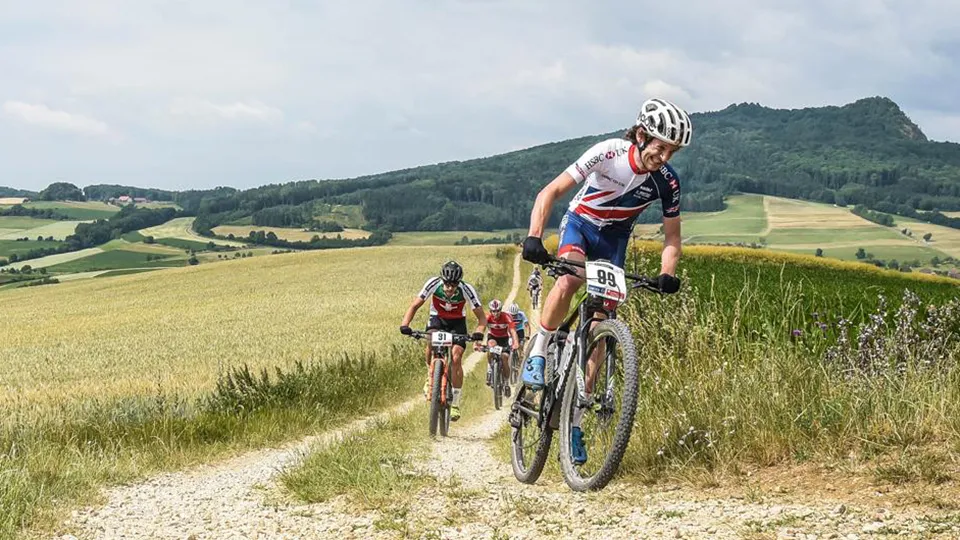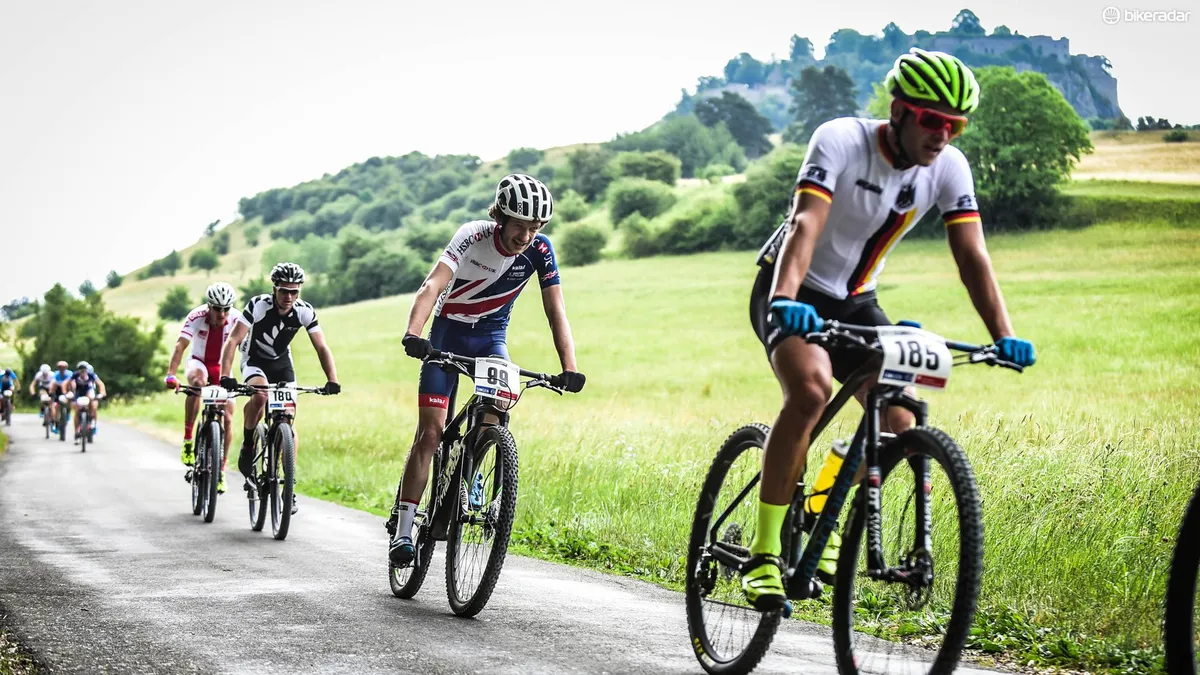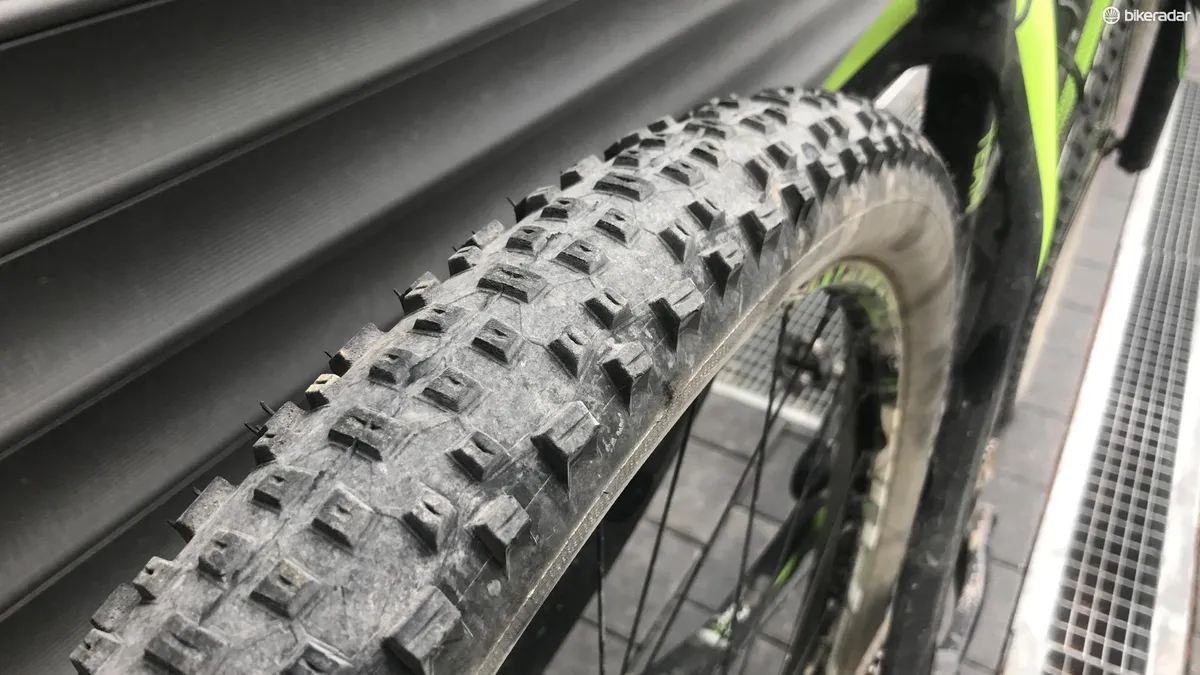As a total amateur, competing for Great Britain at the highest level is something I never thought I’d do, yet that’s exactly where I found myself on 25 June, lining up against the strongest marathon racers on the planet. I’d managed to qualify in 2016 and had spent months visualising (read — trying to avoid thinking about) this very day.
As ever, there were a few setbacks during the build up to this race, including a broken elbow and broken bike, but in the preceding months I felt like I’d done everything I could to be there in the best possible shape, and this included my bike.
For this course it had to be a hardtail
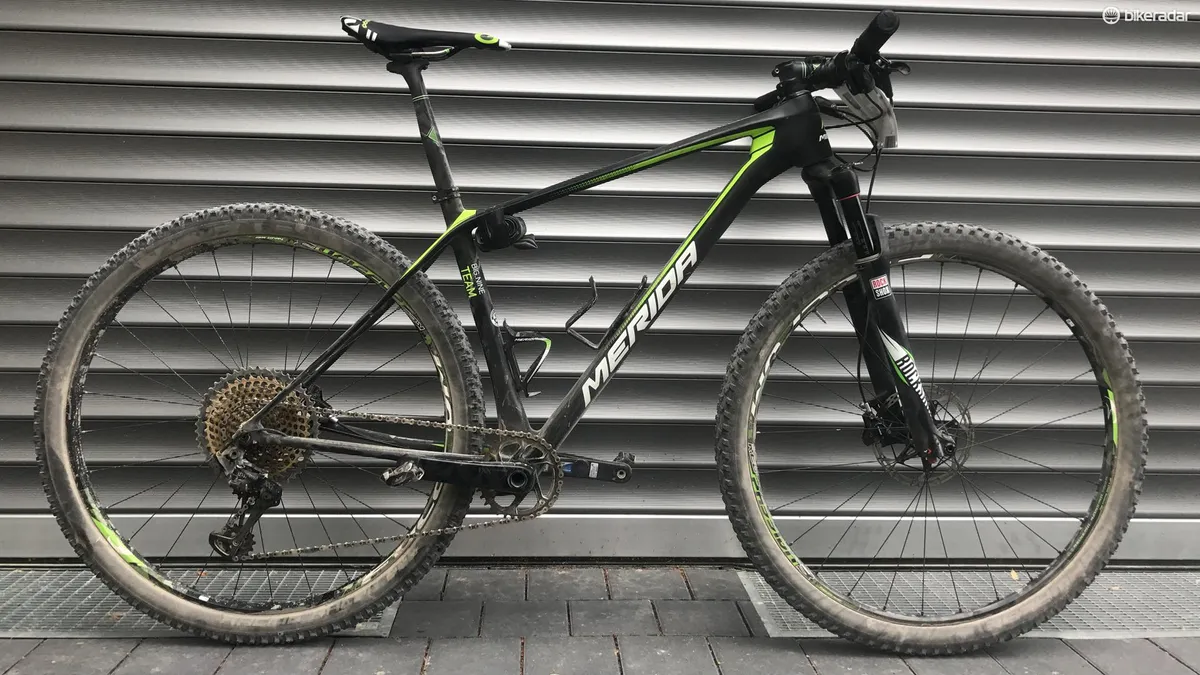
Part of the attraction of international marathon racing are the places you get to visit. Races are often held in beautiful mountainous regions, with huge climbs and equally epic descents.
The 2017 course in Singen, Germany was none of these. It had the length, 100km, and some elevation, 2,800m, but it all took place on fire roads, grass and even tarmac, meaning speeds would be high and tactics would come into play.
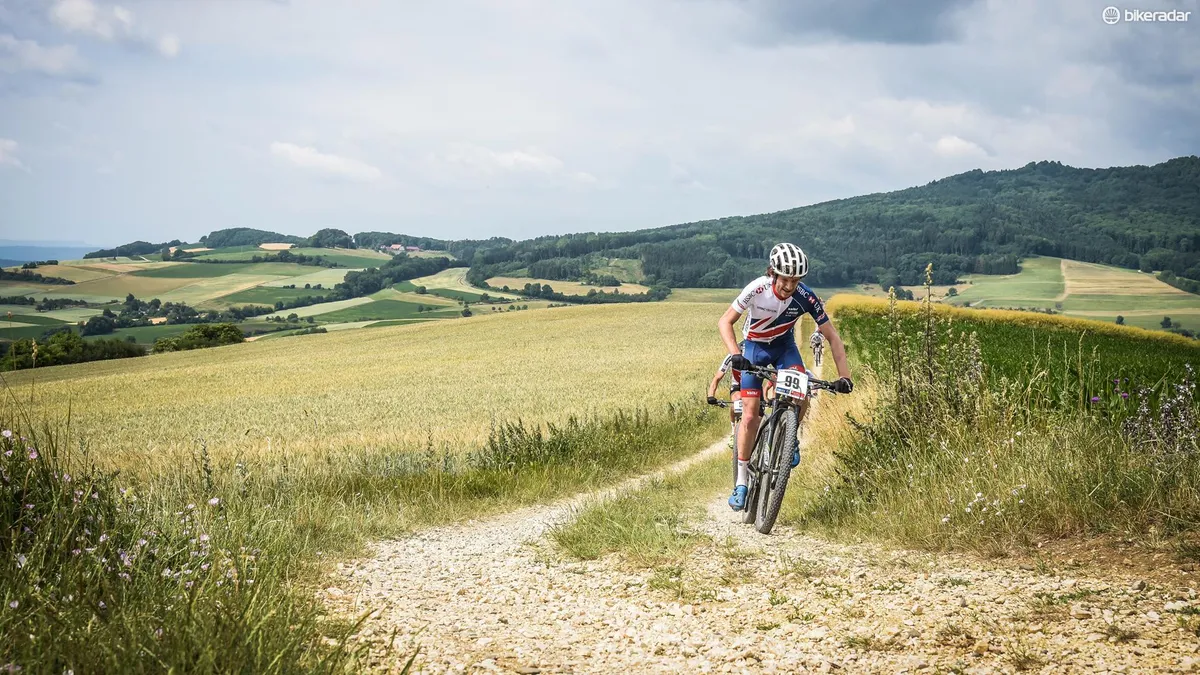
There was no reason for rear suspension so a hardtail would be the perfect tool for the job, and having already ridden and reviewed the Merida Big Nine Team, this would be my go to bike for the fire roads of Singen.
8.6kg rocket ship
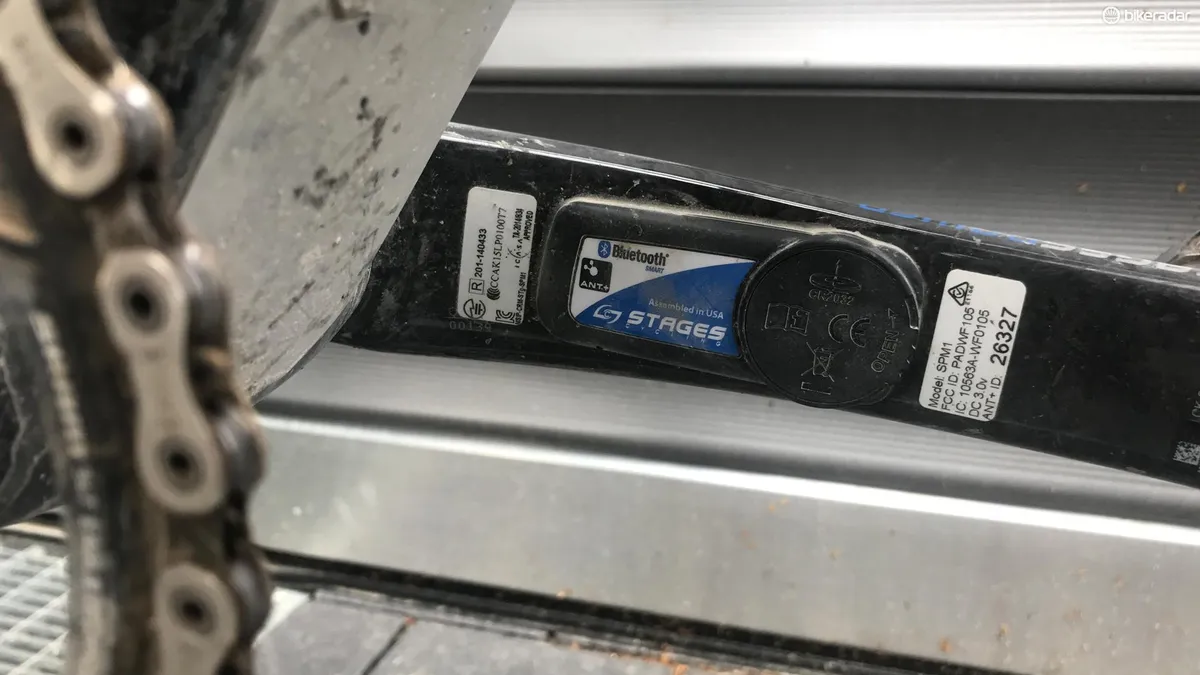
The first thing you notice about the Big Nine is its lack of weight, and weighing around 8.68kg for a size large puts it among the lightest MTB race bikes on the planet.
It features all the marketing jargon you’d expect such as increased stiffness, more compliance and better handling, but at the end of the day it’s a pure race-ready hardtail. This means it’s going to be rapid, but you’ll pay for it with a harsher/sketchier ride compared to a fully sprung machine.
For the marathon worlds, this is exactly what I wanted, maximum speed at the expense of any creature comforts, and nervously looking at my competitors' bikes on the start line, I’d definitely made the right choice with hardly a rear shock in sight.
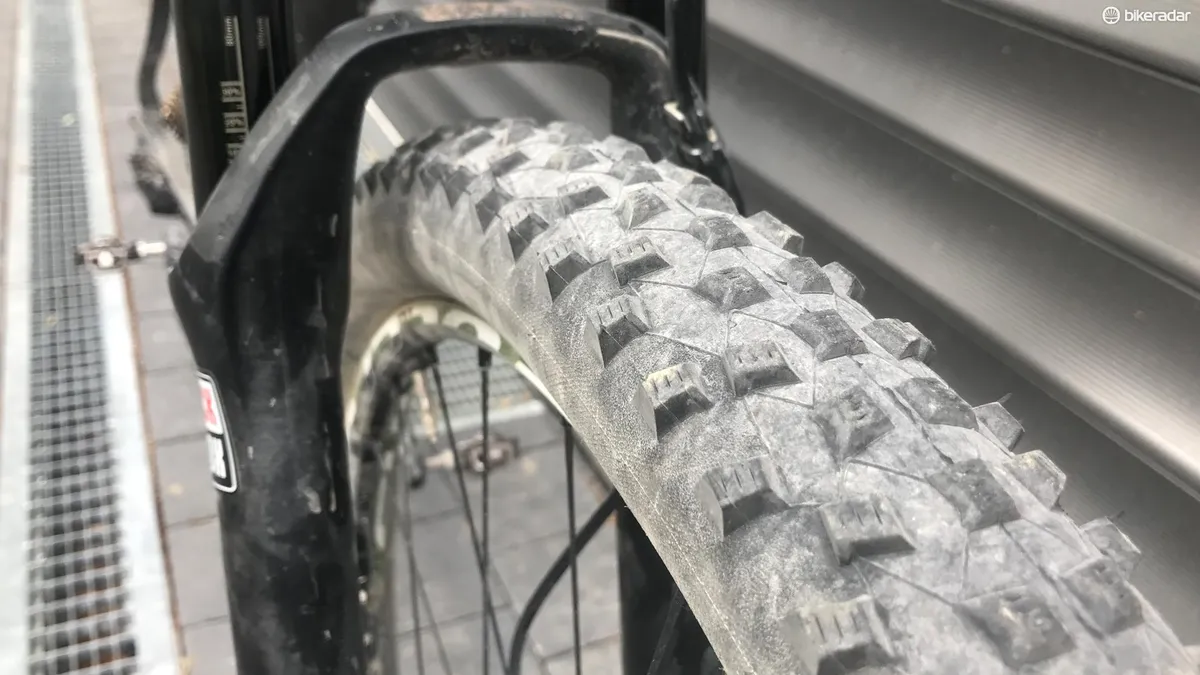
I made a few changes to the stock build before the big day. The first was to swap out the paper-thin Maxxis Ikon tyres for my old faithful setup; a Schwalbe Rocket Ron up front and a Racing Ralph at the rear, both 2.25 in the Snakeskin variety.
Thinner tyres may have been marginally faster, but in a race I was just aiming to finish in one piece, reliability trumped speed. Many riders had chosen semi-slick tyres, but there were still plenty of gravelly corners out on the course, so I stuck (pun intended) to something with more grip.

I used a Stages carbon power meter to help with some semblance of pacing. It’s all too easy to go off like an adrenaline-fuelled maniac in these big events and you always end up paying for it in the last hour. That being said, during the first 20 minutes I averaged 370 watts normalized, which is totally unsustainable for me. Luckily the race settled down after an hour and I was able get my heart rate under control.
Finally, my well-used and totally secure Topeak bottle cage was added. It cost me £4 in 2014 and I’ve never lost a bottle from it, that’s the kind of reliability you need on a hot day.
So how did I get on?

As you’d expect I didn’t win, far from it. But competing against guys like Alban Lakata, Jaroslav Kulhavy and Mathieu Van der Poel, I expected nothing less than a thorough kick in. However, 114th out of 188 riders and a personal best power output of 310 watts normalized for just under four hours at 64kg, meant I left everything out on the trails.
The Big Nine gave me no trouble throughout the race. I was worried that the relatively aggressive treaded tyres might have felt a bit draggy on the road sections, but I didn’t feel like I was losing out to the riders using semi-slicks, and they definitely helped on the loose and gravelly sections.

Despite being an uber light carbon hardtail, the Merida was more comfortable than expected. The extra compliance built into the rearstays and seatpost might sound like marketing jargon, but it made a real difference to how battered my back and core felt at the end of the race. If anything, it was quite disconcerting how much the seatpost flexed when putting the power down seated. Compared to the painfully harsh/stiff hardtails of five years ago, it’s night and day.
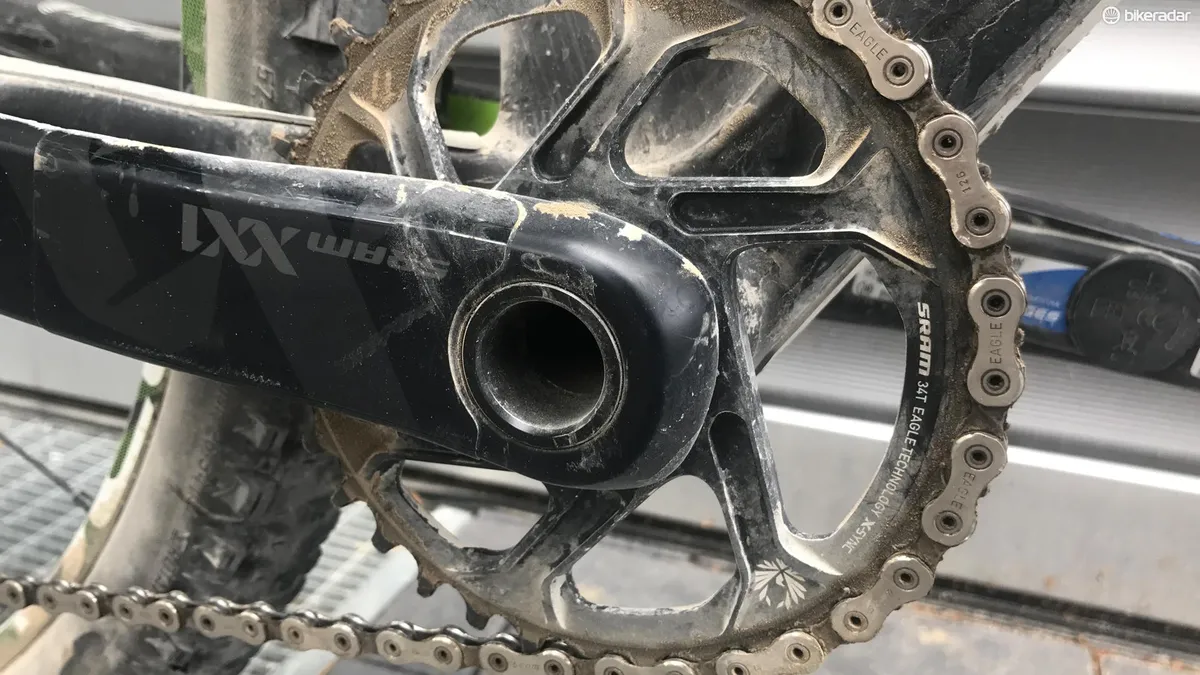
I think the bike's sheer lack of weight helped most in the last hour of the race, where I passed around 10 riders who’d all blown up in the dry heat. Even though I was hurting badly, I still had some gas left in the tank. If I’d been on my regular and heavier full suspension bike this may not have been the case.
One of my biggest worries was that the stock 34 tooth chainring wouldn’t be big enough for the fast sections on course, especially with some big time pros running a huge 38 tooth out front. Thankfully for my skinny legs, 34 was perfect.
I span out on the insanely fast road section at the start (I’ve got a vague memory of Jaroslav Kulhavy passing me up on the pavement at about 35mph), but for the steep grassy climbs my bail out gear of 34x50 saw heavy usage. I’ve still got no idea how anyone manages to churn a 38 up some of those steep gradients, but hey, they’re the best riders in the world.
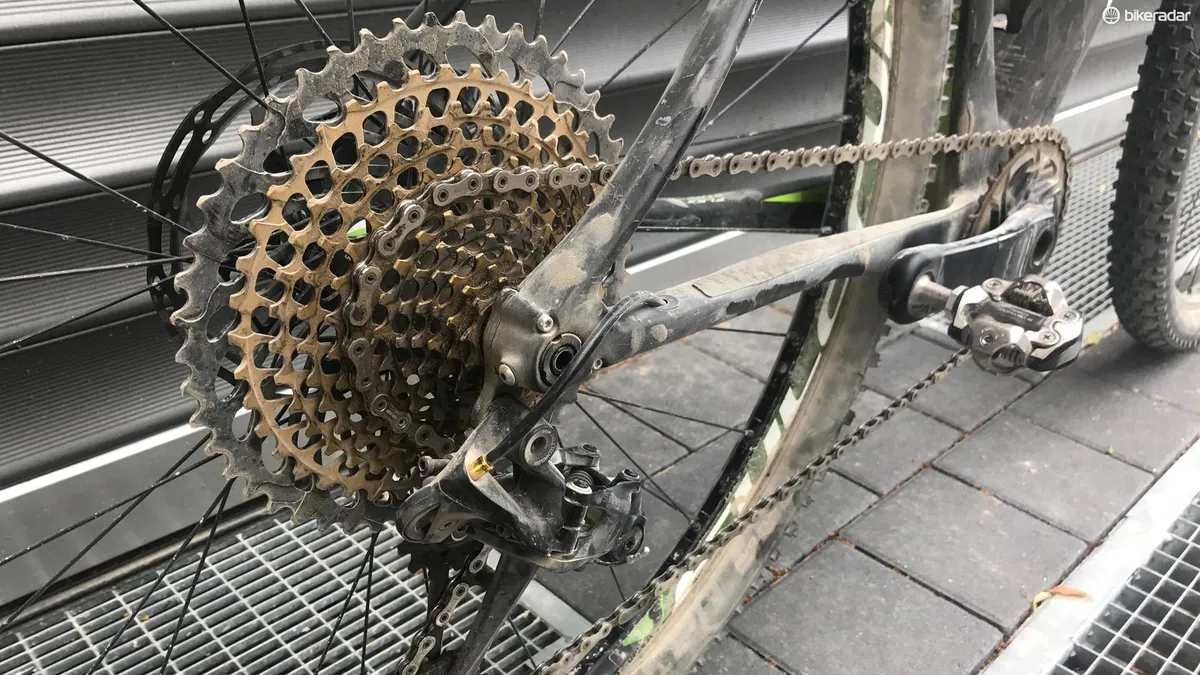
This brings me nicely on to the SRAM Eagle groupset. Having ridden it for almost a year on various bikes it’s an impressive piece of kit. As already mentioned, the extra 50t cog gives you that much needed bail out gear, while still being able to run a decent sized chainring up front. On my long term Cannondale Scalpel it’s delivered crisp shifting for months on end with next to no maintenance, and it served me just as well on the Merida during the race.
Would I change anything? Probably not. It was one of those rare rides where I felt like my equipment, fitness, nutrition and pacing all came together perfectly and there was nothing more I could have done. The fact that this happened on, without doubt, the biggest race I’ll ever do was the icing on the cake.
Hardtails can still cut the mustard
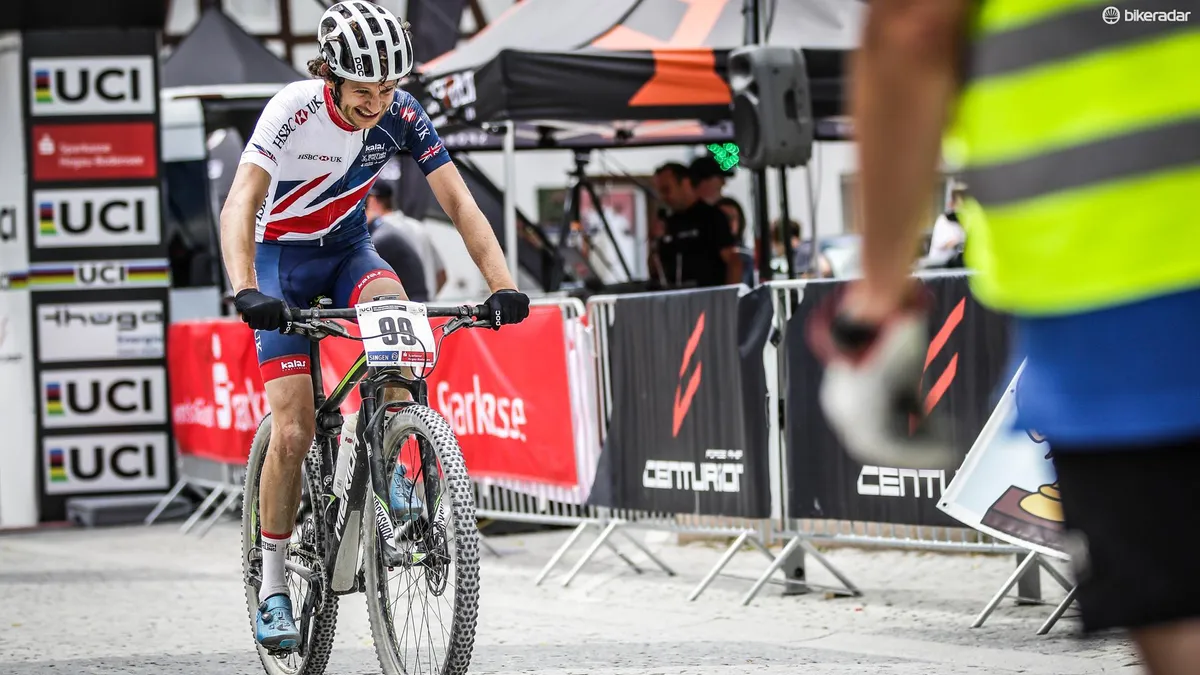
I thought I’d sworn off hardtails having ridden the amazing Cannondale Scalpel Si during the 2017 season, but the Marathon World Champs reminded me that under the right circumstances they can’t be beaten. In fact I had such a good time on the Big Nine I could be finding myself back on a hardtail for the whole of the 2018 season.
